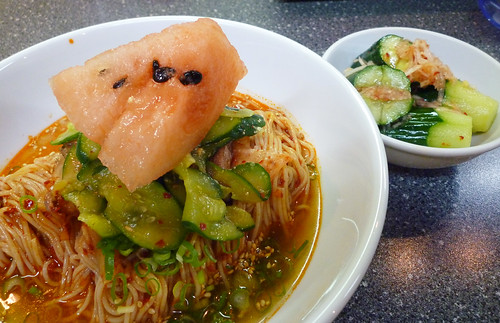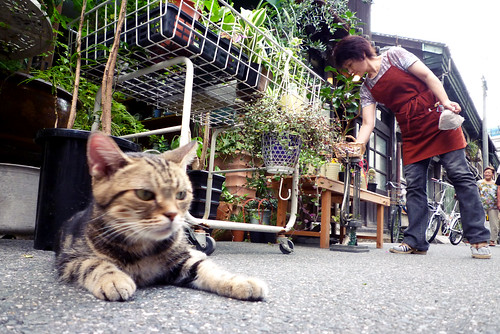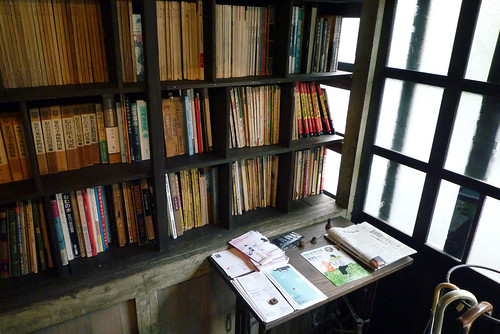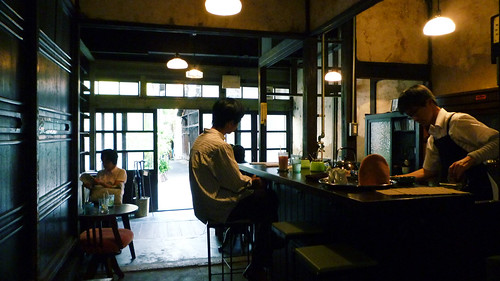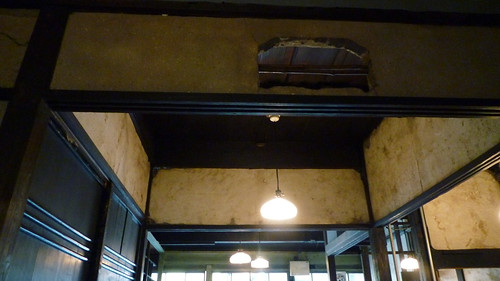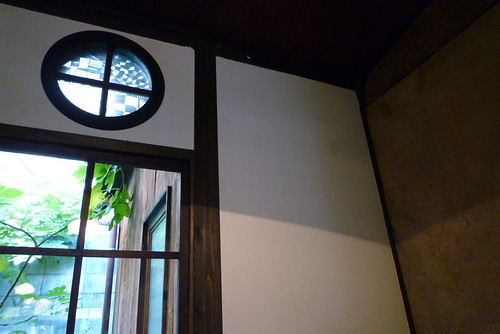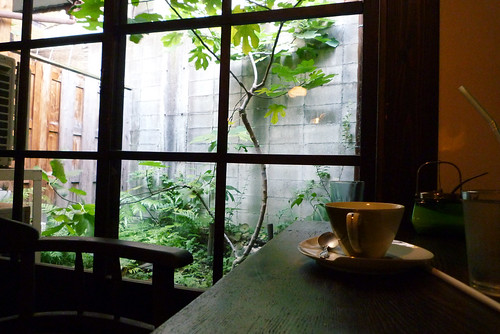I apologize for the lack of activity on my blog over the last couple weeks, but have no fear dear readers, I am still as excited as ever about gorging myself on food and writing about it afterward. In fact I have several blog entries in the works right now. But some have been postponed temporarily until I can get all the right photos (I can be very picky about that sort of thing), while others are just waiting half-written for the time when I can sit in front of the computer long enough to finish them off.
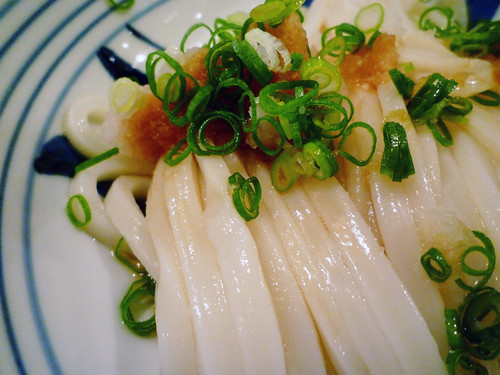
Today's entry is a sneak peek at the culinary dish that will be covering several pages of this blog later this month when I go on a short trip down to
Shikoku. I am of course talking about
udon (うどん 饂飩), a thick white noodle made of wheat that is all the rage in Japan, but nowhere more so than the rural island of Shikoku. Situated in the inland sea of Japan about 50km west of Osaka, Shikoku is the smallest and least populated of Japan's four main islands. As far as I can tell the place is only famous for two things: 1) a 1,200-1,400km long religious pilgrimage of 88 temples that circle the perimeter of the island, and 2) udon noodles. Both the noodles and the religious pilgrimage have their roots in China, and by some accounts the same monk is responsible for bringing back to Japan knowledge of both the Buddha and the noodle.
I'm really excited to go down to Shikoku in two weeks. Thanks to some online research and the wonderful advice of friends and students, I've already picked out a half-dozen udon restaurants to visit, all of them hidden away in the hills and rice fields of Kagawa prefecture in Shikoku. To warm up for this noodle pilgrimage, last night I went to one of my favorite udon shops in Osaka:
Umeda Hagakure.
View Larger MapUmeda Hagakure
Osaka Eki-mae Building No.3, B2 #20
Kita-ku Umeda 1-1
Osaka City, 530-0001
Phone: 06-6341-1409
梅田はがくれ本店
大阪市北区梅田1-1 大阪駅前第三ビルB2-20号
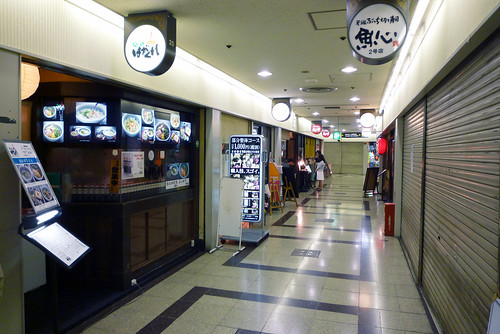
Hagakure is hidden away deep within the labyrinthine system of tunnels that connect all the major train stations in Umeda (Osaka is so vast it has two downtowns, Umeda to the north and Namba to the south). Finding this restaurant among all the hundreds of other restaurants and shops that fill Umeda underground can be an adventure all on its own, but if you are easily disoriented simply go above ground where the Umeda Station buildings are easier to locate. Hagakure is in the second basement floor of Umeda Eki-mae Building No. 3.
While the underground shops nearer the stations are respectable enough, Hagakure is in the part of the underground that lies roughly halfway between Umeda station and Yodoyabashi station. Here, where the foot traffic is less, the shops become slightly more curious, and significantly more lowbrow. As you wander past the discount ticket shops and smoky cafes, the vinyl record shops and combined anime/porno video shops that still stock pink films in VHS, you get an idea that this place has probably seen better days. Over half the shops in this area seem permanently shuttered.
While the area around Hagakure shows signs of neglect, the restaurant itself still draws a crowd, and evenings and lunch-time visits will invariably require a bit of a wait. Luckily it doesn't take anyone a long time to slurp down a bowl of noodles, so don't let a line outside scare you away.
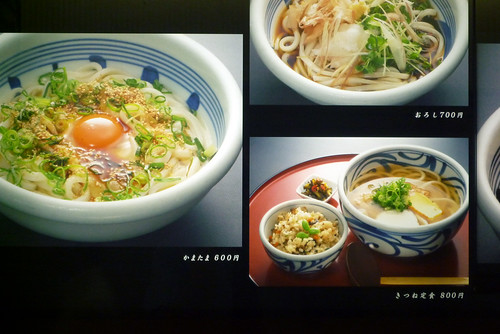
Udon is usually eaten in soup made of fish broth (
dashi だし), soy sauce and sweet rice wine (
mirin 味醂), topped with chopped green onions. Sweet fried tofu, seaweed, and shrimp tempura are popular toppings.
In the hot summer months, though, I prefer to eat my udon noodles chilled, with a light broth. It's very satisfying in this form, and allows you to better judge the taste and texture of the noodles themselves. It also happens to be Hagakure's specialty.
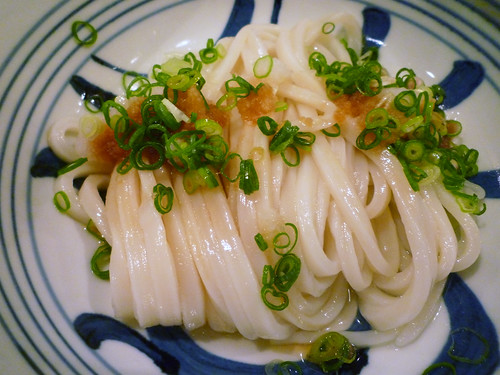
Called
Nama-jyouyu (生じょうゆ), Hagakure's signature udon dish consists of noodles in a bowl covered with shredded daikon radish, chopped green onions, lime juice, and a refreshingly light citrus-based soy sauce.
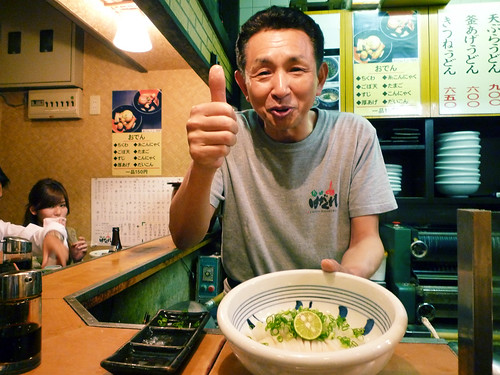
The owner of the restaurant is quite a character and still makes the noodles himself each day, pressing the dough in an ancient machine right inside the tight confines of the kitchen, behind the counter where the single row of seats allow about twelve customers access at a time. The owner comes over to individually instruct new customers on the proper technique for eating the
Nama-jyouyu udon. There's only one right way to eat his udon, he insists, and it requires selecting two noodles at a time, and only two noodles at a time, from the very center of the pile. The noodles are laid out so that you can slurp them up in this fashion without ruining the appearance of the pile of noodles, insuring that each pair will come with its fair share of sauce, shredded radish, and green onion.
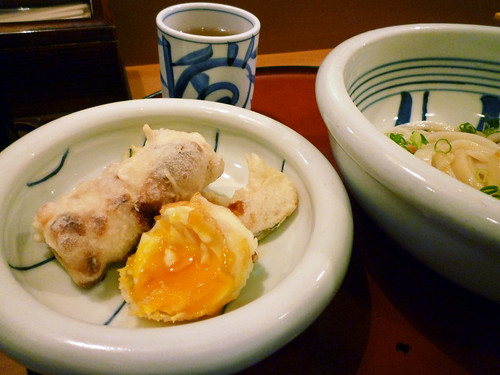
There's another dish at Hagakure that I can't forget to mention: and that's the mini plate of Tempura. It comes with a half-boiled egg,
pressed-fish stick (
chikuwa ちくわ)and a thin slice of pumpkin, all coated in a very light batter and briefly deep-fried. Half-boiled eggs are an acquired taste to those like myself who grew up hating their eggs sunny side up, but once you get the hang of them they can be rather addicting.
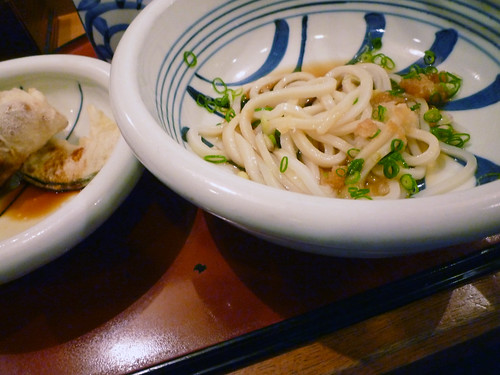
Look for more udon reviews after my trip to Shikoku later this month. Anyone have any last minute recommendations for Kagawa noodle shops I should add to my list? Let me know!

